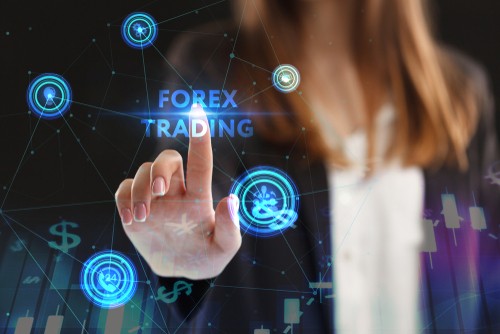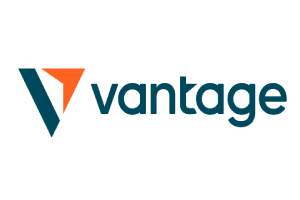Throughout history, forex trading is one of the financial markets that have seen a massive change.
Our Forex Signals
1 - month
Subscription
 Up to 15 signals daily
Up to 15 signals daily 76% success rate
76% success rate Entry, take profit & stop loss
Entry, take profit & stop loss Amount to risk per trade
Amount to risk per trade Risk reward ratio
Risk reward ratiomonth
3 - month
Subscription
 Up to 15 signals daily
Up to 15 signals daily 76% success rate
76% success rate Entry, take profit & stop loss
Entry, take profit & stop loss Amount to risk per trade
Amount to risk per trade Risk reward ratio
Risk reward ratiomonth
 Most popular
Most popular
6 - month
Subscription
 Up to 15 signals daily
Up to 15 signals daily 76% success rate
76% success rate Entry, take profit & stop loss
Entry, take profit & stop loss Amount to risk per trade
Amount to risk per trade Risk reward ratio
Risk reward ratiomonth
Lifetime
Subscription
 Up to 15 signals daily
Up to 15 signals daily 76% success rate
76% success rate Entry, take profit & stop loss
Entry, take profit & stop loss Amount to risk per trade
Amount to risk per trade Risk reward ratio
Risk reward ratioSeparate Swing Trading Group
 Up to 3 signals weekly
Up to 3 signals weekly 76% success rate
76% success rate Entry, take profit & stop loss
Entry, take profit & stop loss Amount to risk per trade
Amount to risk per trade Risk reward ratio
Risk reward ratiomonth
1 - month
Subscription
 Up to 15 signals daily
Up to 15 signals daily 76% success rate
76% success rate Entry, take profit & stop loss
Entry, take profit & stop loss Amount to risk per trade
Amount to risk per trade Risk reward ratio
Risk reward ratiotime
As early as the 1990s, the forex market was only for large financial institutions, unlike now that anyone with an internet connection can access the market.
Eightcap - Regulated Platform With Tight Spreads

- Minimum deposit of just 250 USD to get lifetime access to all the VIP channels
- Use our Secure and Encrypted Infrastructure
- Spreads from 0.0 pips on Raw Accounts
- Trade on the Award-Winning MT4 & MT5 Platforms
- Multi-jurisdictional Regulation
- No Commission Trading on Standard Accounts


But where did the currency exchange market start?
The history of the currency market dates back to the middle ages, whereby currency was only traded via international banks.
3
Payment methods
Trading platforms
Regulated by
Support
Min.Deposit
Leverage max
Currency Pairs
Classification
Mobile App
Min.Deposit
$100
Spread min.
Variables pips
Leverage max
100
Currency Pairs
40
Trading platforms
Funding Methods





Regulated by
FCA
What you can trade
Forex
Indices
Actions
Cryptocurrencies
Raw Materials
Average spread
EUR/GBP
-
EUR/USD
-
EUR/JPY
0.3
EUR/CHF
0.2
GBP/USD
0.0
GBP/JPY
0.1
GBP/CHF
0.3
USD/JPY
-
USD/CHF
0.2
CHF/JPY
0.3
Additional Fee
Continuous rate
Variables
Conversión
Variables pips
Regulation
Yes
FCA
No
CYSEC
No
ASIC
No
CFTC
No
NFA
No
BAFIN
No
CMA
No
SCB
No
DFSA
No
CBFSAI
No
BVIFSC
No
FSCA
No
FSA
No
FFAJ
No
ADGM
No
FRSA
71% of retail investor accounts lose money when trading CFDs with this provider.
Min.Deposit
$100
Spread min.
- pips
Leverage max
400
Currency Pairs
50
Trading platforms
Funding Methods




Regulated by
CYSECASICCBFSAIBVIFSCFSCAFSAFFAJADGMFRSA
What you can trade
Forex
Indices
Actions
Cryptocurrencies
Raw Materials
Etfs
Average spread
EUR/GBP
1
EUR/USD
0.9
EUR/JPY
1
EUR/CHF
1
GBP/USD
1
GBP/JPY
1
GBP/CHF
1
USD/JPY
-
USD/CHF
1
CHF/JPY
1
Additional Fee
Continuous rate
-
Conversión
- pips
Regulation
No
FCA
Yes
CYSEC
Yes
ASIC
No
CFTC
No
NFA
No
BAFIN
No
CMA
No
SCB
No
DFSA
Yes
CBFSAI
Yes
BVIFSC
Yes
FSCA
Yes
FSA
Yes
FFAJ
Yes
ADGM
Yes
FRSA
71% of retail investor accounts lose money when trading CFDs with this provider.
Min.Deposit
$50
Spread min.
- pips
Leverage max
500
Currency Pairs
40
Trading platforms
Funding Methods




What you can trade
Forex
Indices
Actions
Raw Materials
Average spread
EUR/GBP
-
EUR/USD
-
EUR/JPY
-
EUR/CHF
-
GBP/USD
-
GBP/JPY
-
GBP/CHF
-
USD/JPY
-
USD/CHF
-
CHF/JPY
-
Additional Fee
Continuous rate
-
Conversión
- pips
Regulation
No
FCA
No
CYSEC
No
ASIC
No
CFTC
No
NFA
No
BAFIN
No
CMA
No
SCB
No
DFSA
No
CBFSAI
No
BVIFSC
No
FSCA
No
FSA
No
FFAJ
No
ADGM
No
FRSA
71% of retail investor accounts lose money when trading CFDs with this provider.
The modern forex market that’s characterized by high volatility periods, as well as relative stability only, formed itself during the twentieth century.
By the mid-1930s, the British capital, London, became the leading center for forex while the British pound served the currency for trading as well as to keep as the reserve currency.
The pound has the nickname of “cable” because by then, forex was traded only on the telex machines or cable.
Now, after the Second World War, the British economy was destroyed, and the US was the sole country that was unscarred, and hence, the US dollar became the reserve currency used for a plethora of countries.
Furthermore, the USD was pegged to gold at $35 per ounce. As a result, it became the globe’s reserve currency.
Moreover, under a similar agreement was organized the IMF (International Monetary Fund) that are now rendering significant financial support to developing as well as former socialist countries.
In executing its goals, the IMF uses instruments like reserve trenches that allow members to draw their own reserve asset quota during payment, stand-by arrangements as well as Credit trenches drawings.
However, the most significant landmark in financial markets’ history was at the end of the 70s, when the free-floating of the currencies was officially mandated.
It was the basis of the formation of foreign exchange in its contemporary understanding.
Therefore, it means that the currency can easily be traded by anybody as well as its value is merely a function of the current supply as well as demand forces in the market. Moreover, there’re no particular intervention points to be observed.
Undoubtedly, forex trading has gone through a series of growth since the currencies were let to float freely against each other.
To get a clear picture of this massive growth in forex, in 1977, daily forex turnover was $5 billion, and ten years later, the number had increased to $600 billion.
As if that’s not enough, in 1992, the daily turnover reached a landmark at $1 trillion, which later stabilized at $1.5 trillion by 2000. By the year 2010, the daily turnover was at around $5 trillion.
But what were the main factors that influenced this spectacular growth?
A lot of factors engineered the growth with a major role belonging to the high volatility of the currency rates, increasing the mutual influence of various economies on interest rates that are established by central banks that affect currency exchange rates.

Also, there’s the intense competition on the commodity markets as well as the amalgamation of corporations of various countries.
There’s also the technological revolution in currency trading that led to the development of the automated dealing systems as well as transition o currency trading via the internet.
Furthermore, simultaneously matching systems connect traders across the globe electronically that duplicates the broker’s market.
AvaTrade - Established Broker With Commission-Free Trades

- Minimum deposit of just 250 USD to get lifetime access to all the VIP channels
- Awarded Best Global MT4 Forex Broker
- Pay 0% on all CFD instruments
- Thousands of CFD assets to trade
- Leverage facilities available
- Instantly deposit funds with a debit/credit card

Generally, a lot of folks are currently making a lot of profits from the forex market to the extent that others are now considering full-time forex trading.
All this has been made possible as a result of advancements in technology, computer software as well as telecommunications that, together with an improved experience, have increased sophistication levels of traders.
In return, the trading volume has also gone up by a mile and still on a positive projectile.

